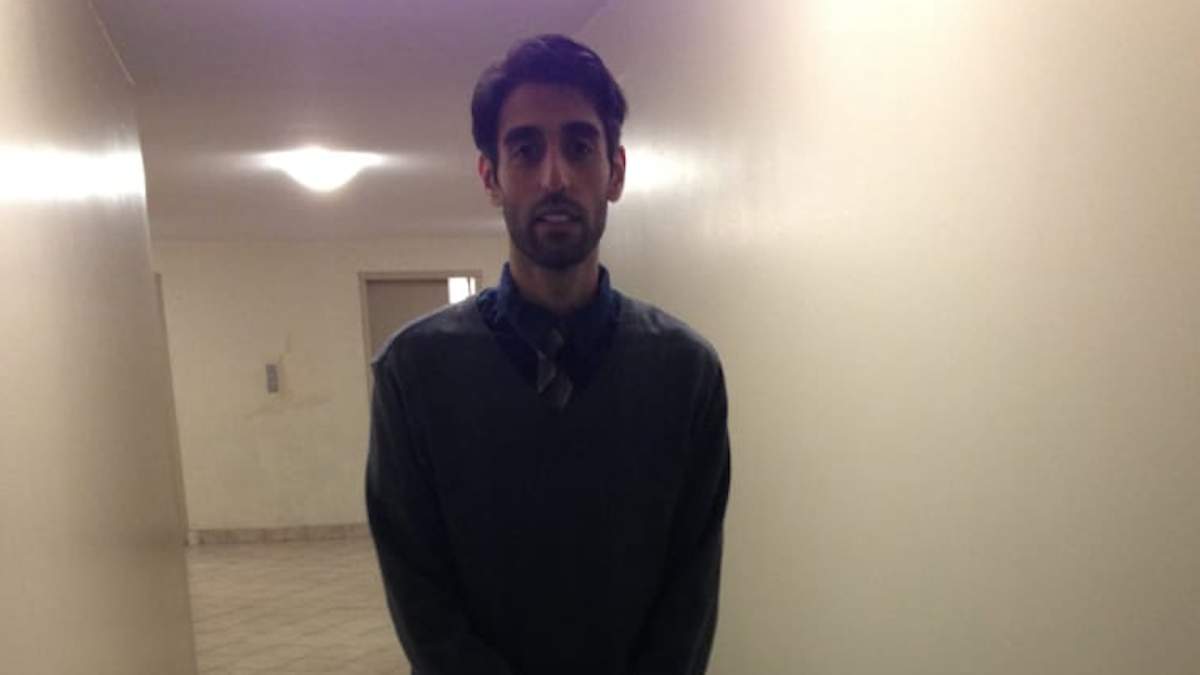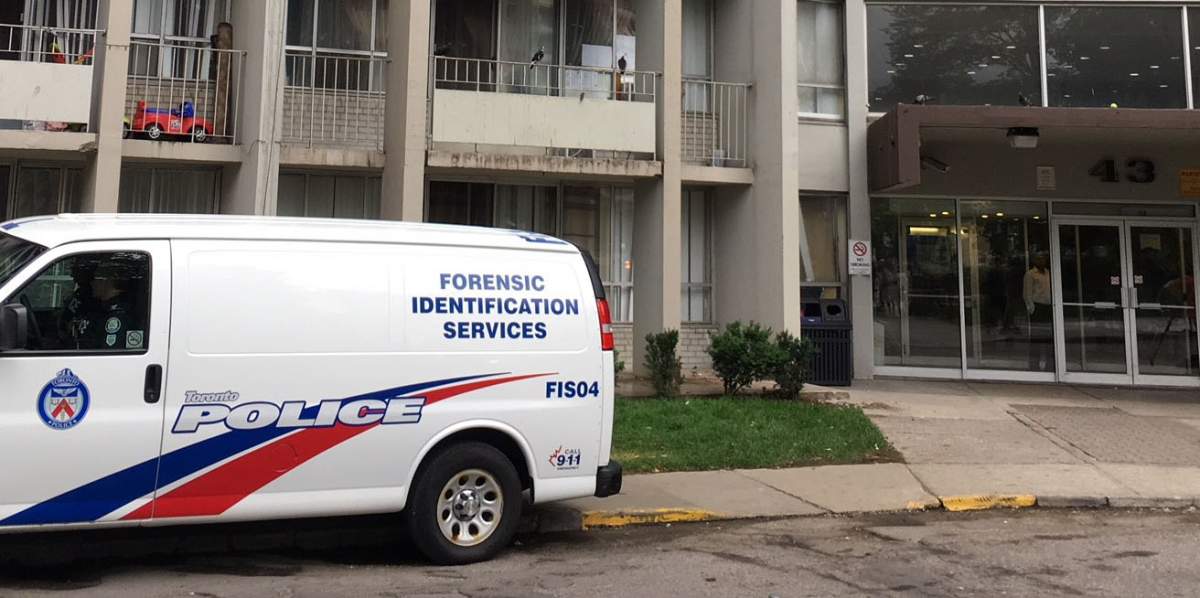The mass shooting in Toronto that killed two young girls and injured another 13 has reignited the debate about gun control in Canada, specifically around the issue of handguns.

Sunday’s rampage began when 29-year-old Faisal Hussain opened fire with a handgun in Toronto’s vibrant Greektown, killing 18-year-old Reese Fallon and 10-year-old Julianna Kozis. Hussain also died, either as a result of exchanging gunfire with police or a self-inflicted wound.
In the aftermath of the tragedy, Mayor John Tory stood before city council Monday to address gun violence and called for tougher restrictions on firearms.
READ MORE: Reese Fallon, 18, identified as victim of Danforth shooting
“I’ve said for some time that the city has a gun problem, in that guns are far too readily available to far too many people,” Tory said Monday.
“You’ve heard me ask the question of why anybody would need to buy 10 or 20 guns, which they can lawfully do under the present laws. And that leads to another question we need to discuss: Why does anyone in this city need to have a gun at all?”
Firearms in Canada
There is no shortage of guns in Canada. The 2017 report from the RCMP’s Commissioner of Firearms shows 839,295 restricted and prohibited guns — many of them handguns — across the country, almost double the 480,000 in 2005.
Data released Monday from Statistics Canada shows gun crime is also on the rise. In 2017, there were 2,734 firearm-related violent offences up from 2,534 in 2016.
READ MORE: Suspected Danforth mass shooting gunman was known to police for mental health reasons
Gun-related homicides have also been on the rise in recent years, rising to 223 in 2016 going from 175 in 2010. More than half of the murders were committed with handguns in 2016 while 13 were committed with sawed-off rifles or shotguns. Statistics Canada noted that 54 per cent of gun homicides that year were gang-related.
The Danforth shooting, which made international headlines, comes as the city has seen a sharp spike in gun violence with 228 shootings so far this year and 29 deaths as of July 24. Toronto saw 205 shootings in all of 2017, 208 in 2016 and 164 shootings in 2015. In 2014, there were 101 shootings.
Canada’s Criminal Code already imposes restrictions on handguns, which include passing a two-day safety course, a background check, a waiting period (if you don’t already own a gun), joining a shooting club in order to get an Authorization to Transport (ATT), and submitting all documentation when buying the gun.
WATCH: Here’s what we know and still don’t know about the Danforth shooting
Yet there are calls, including from Toronto councillor Joe Cressy, for legislation similar to that of the U.K., Australia and Japan, which have effectively banned handguns.
Wendy Cukier, a professor at Ryerson University and president of the Coalition for Gun Control, said the handgun debate has been ongoing for more than two decades but that more than 60 per cent of Canadians are in favour of a total ban.

Get breaking National news
“It would require bold and fearless leadership, a massive wake-up call to Canadians and mobilization beyond what we have seen over her last 25 years,” she said. Cukier pointed to the ban on handguns in the U.K. following the Dunblane massacre, which she said had a “dramatic” effect on reducing gun homicides.
“Last year the U.K., with 60 million people, had 27 gun murders,” she said. “In Canada, the gun lobby has hijacked the public safety agenda and politicians have been unwilling even to restore controls on handguns or on the sales of rifles and shotguns that were in place in 1977.”
READ MORE: Islamic State claims responsibility for Toronto mass shooting, yet provides no evidence
Public Safety Minister Ralph Goodale said Tuesday that while Ottawa is prepared to consider a proposal to ban handguns, such changes would be complex and require a “significant remodeling of the Criminal Code.”
“A number of groups and organizations made representations to that effect earlier this year. I said that we would be prepared to consider their arguments and we will do that,” Goodale told reporters on Tuesday.
“We’ll obviously examine carefully what they’ve had to say. Public safety is extremely important to all Canadians and we need to make sure that we get this right.”
Goodale said a similar proposal was first brought forward following the January 2017 mosque shooting in Quebec City that left six people dead.
Where do ‘crime guns’ come from?
Investigators have not said how Hussain acquired the handgun. Handguns can be obtained through legal purchase, illegally after being smuggled from the United States, or obtained legally in Canada but then sold for criminal purposes through so-called “straw purchasing.”
Rob Di Danieli of the guns and gangs unit told Global News in a recent interview that in 2011, about 70 per cent of the firearms were smuggled from the U.S, but that changed in 2017.
“Last year we had 55 per cent smuggled, 45 per cent domestically sourced,” he said. “We needed to clean up some of our own backyard so we started to do things like compliance checks and unusual purchase patterns.”
READ MORE: Reese Fallon remembered, honoured by loved ones

New numbers from Canada Border Services Agency show that more guns are being seized at the border, with 738 seized in 2017. In 2013, that number was 478. A Toronto police investigation dubbed Project Patton led to the seizure of more than 70 guns originating from Florida and more than 1,000 charges.
Di Danieli also was concerned about the increasing prevalence of “ghost guns” (unfinished and unidentifiable firearms) shipped from the U.S. and elsewhere that contribute to the availability of illegal firearms.
The Canadian Association of Chiefs of Police has also warned about the issue of “straw purchasing,” which accounts for about “50 per cent of all handguns” used in crime that have been traced.
“Without action, we do not see any changes to this growing trend,” CACP said in a statement.
Solomon Friedman, an Ottawa criminal defence lawyer, took issue with the recent assertions by police agencies about the rising rates of domestically sourced “crime guns.”
“There is an enormous fallacy with that number and that is in the fine print,” he told Global News in a recent interview. “They say the number of crime guns that can be traced. Obviously that number is going to be biased to guns that can be traced domestically.”
Friedman said roughly 16 per cent of crime guns could be traced at all, meaning that only eight per cent of crime guns are domestically sourced.
A recent report from the B.C. government found that almost 60 per cent of the guns seized in connection with criminal investigations were domestically sourced — either purchased, traded or stolen in Canada. Many were legally obtained by people without criminal records, then sold to organized crime groups.
Jooyoung Lee, an associate professor at the University of Toronto who specializes in gun violence, said that any time there is a legal market for civilians to own concealable firearms, they could potentially end up being used in a crime.
“There is always a possibility that those kinds of firearms purchased legally can flow into the hands of people who want to use them to commit carnage,” he told the Canadian Press.
READ MORE: Friend of Faisal Hussain expresses shock over Danforth shooting
Ottawa is looking to pass Bill C-71, legislation to amend the Firearms Act, which would expand background checks to outside the five years immediately before a potential purchase, to include all information from a potential buyer’s history.
For Jordan Donich, a defence lawyer based in Toronto, banning handguns wouldn’t have an effect on firearms-related homicides as most guns used in murders are smuggled here illegally.
“Banning handguns is not going to fix the crime, because they are getting here illegally already,” Donich said. “The problem starts at the border.”
Donich said the cost of enforcing the policy would be costly.
“It just tells people who are lawfully abiding, who are professionals, who follow the rules, that they can’t have a handgun,” he said. “It won’t fix the problem.”
Friedman said policymakers should be looking at the reasons why disaffected young men pick up a gun in the first place.
“The gun end of the problem is the band-aid,” he said. “The regulatory side of this is a distraction to the problem. The problem requires actual resources to fix.”
— With files from Patrick Cain and the Canadian Press



















Comments